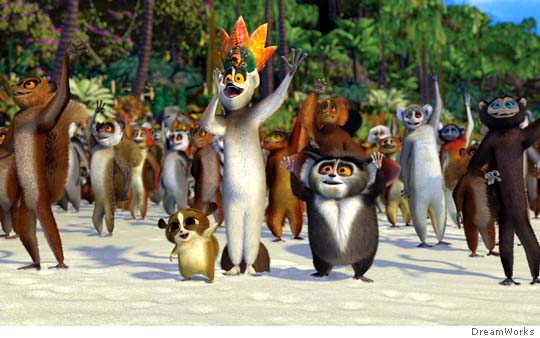

Madagascar, larger than California and about size the size of Texas or France, is the world's fourth largest island. Isolated in the Indian Ocean off the coast of southern Africa, about 70% of the estimated 250,000 species found on the island exist nowhere else on the globe. The island is home to such evolutionary oddities as lemurs, a group of primates endemic to the island; brilliantly colored lizards including geckos and chameleons; tenrecs, spiny hedgehog-like creatures; and the fossa, a carnivorous animal that looks like a cross between a puma and a dog but is closely related to the mongoose.

Beaches and diving destinations
Nosy Be Archipelago
These tropical islands off the northwest coast have some of the region's finest beaches. Most accessible on Nosy Be is Andilana, the northernmost beach. Don't miss the day trip to beautiful, reef-ringed Nosy Tanikely, a marine reserve with a lovely, sunny beach. Nosy Komba has a good, small beach near Ampangorinana village; and quiet, unspoiled coves in the south of the island. There are real gems further afield on Nosy Iranja ("the turtles island") and in the Mitsio Isles.
Ile Sainte Marie
Along the west coast, there are a number of secluded, palm-lined coves, off which to swim and snorkel and there is a stunning beach on the offshore islet of Ile Aux Nattes. The orchids are at their peak in September and the whales' migration takes place between July and October.
Ifaty
Ifaty has a pleasant beach and easy access to the spiny desert. The beach is at its best in front of the hotels Bamboo Club and Vovo Telo. The coral reefs attract scuba divers and there is an good PADI diving centre, but the coral is in very poor condition, mostly due to the effects of El Nino.
Anakao & Nosy Ve
Anakao is a traditional Vezo fishing village on the southwest coast of Madagascar, about 35 km south of Toliara (Tuléar). Its isolation has protected it from most tourism and it remains fairly unspoiled. Among Madagascar aficionados, Anakao is known for its long white beach lined with an armada of brightly painted pirogues; its turquoise lagoon, with tints of emerals; its fishing, diving and surfing ('Flamball').
Sadly, its once-superb snorkelling is a thing of the past, now that bleaching has reduced the shallow reef to a vista of dead coral. The traditional practice of hunting for sea cucumbers and octopus has caused further damage; and its growth, fuelled by demand from the Far East, is placing intolerable pressure on the marine environment. Purchasing items made by the local women provides them with an alternative source of income.
A short walk south of Anakao will lead you to some tombs, and then to a peninsula on which fragments of Aepyornis eggshells can still be found (It is illegal to take them out of Madagascar.). A visit to the weekly market is another pleasure of a stay in Anakao.
Most people enjoy being on a tiny desert island. Three km west of Anakao, the island of Nosy Ve, with its superb white beach, reefs and breeding colony of tropic-birds, makes a lovely day-trip. In addition to the Red-tailed tropic-birds, birders should encounter a variety of terns, and, with luck, Crab plovers and the White-tailed tropic-birds.
MorondavaThe Morondava seafront has a wide, white sandy beach off which it is safe to swim. It is at its best in the vicinity of Hotel Chez Maggie.
Island HoppingSail the Indian Ocean on board a luxury private yacht, mooring at inhabited and uninhabited islands in the Nosy Be Archipelago and the remote Mitsio Isles.


1 comment:
"Hi, I Saw Your Link in Bing.com I Love Your Blogs Kindly See my Link Here a New Alternative Money Making Network alternative to adbrite here
"
Post a Comment